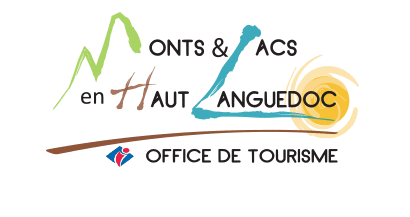| Anglès
Temple, ancient door and church |
|
| Berlats
The way of “jasses” : Many jasses (sheperds shelters) and the menhir statue of the Soulière |
|
| Cambon-et-Salvergues
The church of Salvergues built in 1829 The ruins of the church Saint-Pierre of Espinouse built in the 12th century – Undergoing restoration works The Saint-Martin-du- Froid chapel The source of the Agout river |
|
Castanet-le-HautThe mill of Nougairol : Roof covered with slatestones, béal and water retention area. Saint-Eutrope chapel : Built on a rocky peak and located on the northen slopes of the Espinouse mountain (a free shelter for pilgrims). The bread oven of Fagairolles : The former castélas The belvedere (lookout) of the Mounis cross The cliffs of Orques The pass of the Espinouse : Belvedere and information point |
|
EspéraussesThe path of Cahus : Two 16th century castles, including the castle of Calvayrac La Tourette also named the Barbacane (Barbican), that had a defensive function during the wars of religion . |
|
Fraïsse-sur-AgoutThe « palhièr » (barn-stable) of Prat d’Alaric and its woven broom roof – A registered site «Maison de Pays ». The menhir of Picarel : A menhir-statue about 2km far from the village on the D169 road toward Lake of Vésoles then turn right (at the road sign). The millenium beech The pedagogic circuit “The strengh of water” |
|
Lacaune-les-BainsLa Fontaine des Pisseurs : Finished in the 16th century, the “Fontaine des Pisseurs” symbolises the thermal past of Lacaune. It is a listed historical monument. La Pierre Plantée (standing stone) : One of the highest menhir statue in Europe, listed historical monument in 1883. |
|
La Salvetat-sur-AgoutSaint-Etienne-de-Cavall chapel : To go back through 1000 years of history about La Salvetat. Discover this medieval monument, its anecdotes, its legends and its famous black virgin. Menhir-statue and fountain of Couffignet |
|
Murat-sur-VèbreSaint-Etienne church : Since the 12th century, the church has welcomed pilgrims on their way to St-Jacques of Compostelle. Castle of Canac : The ruins of this feudal castle, overhanging the village, are quite remarkable remains. Walk around the ruins of the castle (historical and architectural explanatory boards). The tower of Boissezon of Masviel : Have a look at his ancient tower, last remnant of the feudal castle that overhanged the houses. |
|
NagesThe frescoes of the church : Dare to enter the church to admire the bright frescoes painted in June 2005 by Michaël Greschny. Open all year long Tel : 05.63.37.12.29 The lime kiln of Fourcaous Bread ovens of Rouvière and of Salvaget : The « jasse » of the castle and two « jasses » ont theroad of St-Jacques going through the village. Narulle water mill : Known as soon as the 15th century and always in use as it was with its millstones and its « roudet » (horizontal wheel), between Nages and La Trivalle. Visit on prior appointment and according to the animation agenda Tel. : 05.63.37.12.29 |
|
SenauxThe fountain of the “pigeonnier” (dovecote) : A Roman fountain formely located under a dovecote, with cross-ribbed vaults and many crosses. |
|
VianeFontaine de Roucoules : A mysterious fountain from the 16th century, registered as historical monument. |
